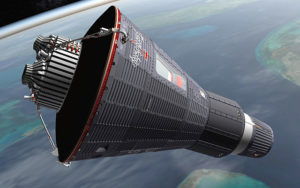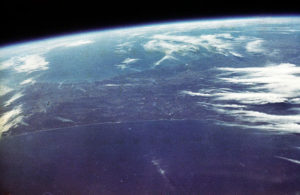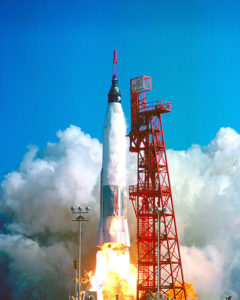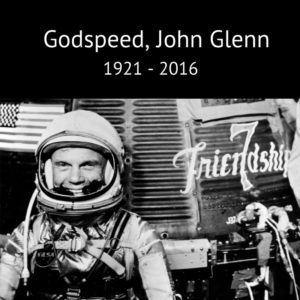On February 20th, 1962, John Glenn became the first American to orbit the Earth in his Mercury capsule, Friendship 7. It was a short, 3 orbit mission, but regardless, an American had orbited the Earth and returned safely, which was a key goal of Project Mercury from the get-go.
Of course, Glenn wasn’t the first person to orbit – that title would go to Yuri Gagarin back in April of 1961 with his Vostok 1 mission. Glenn wouldn’t even be the second man to orbit – Gherman Titov would launch in August of 1961 for a day long mission in August of 1961. Glenn’s 3 orbit, 5 hours mission would pale in comparison, but for the United States it still was an accomplishment. Indeed, it was, regardless of what side of the race you look at it from – getting a human being into orbit, and returning them safely, on a converted ballistic missile, is an incredible proposition, but we had done it. We were slowly, but surely, on our way to the Moon.
The mission wasn’t without fault, however. There was a stuck thruster early on, which was quickly overridden, but a greater issue presented itself. Sometime during the flight, before re-entry, an alert indicator came on that the heat shield was loose. This was part of the landing system of Mercury – a landing bag would deploy from between the heat shield and the capsule, cushioning the impact with the water upon splashdown. Of course, this deploying early, before re-entry, would be a fatal error.
Now, over the Mercury capsules heat shield was a small solid-fueled rocket pack used to slow the spacecraft for re-entry into the atmosphere and its return to Earth. This pack was literally strapped over the heat shield, incidentally, holding it in place during flight – it if was loose, the retro-pack was keeping it against the spacecraft. At least, for now – normal procedure during flight was to jettison this pack after it fired, thus clearing the heat shield of any material that could endanger the craft during the critical process of re-entry.

Computer Generated image of Friendship 7. Note the retro-pack on the left, covering and holding down the heat shield.
No one knew if the indication was correct or not, but no one wanted to take that risk – the decision was made, after some checks which resulted in inconclusive results, by Flight Director Chris Kraft and Mission Director Walter C. Williams to leave the retro-pack on during re-entry, until the pressure on the craft would be enough to keep it in place regardless if the bag had deployed or not. Glenn would comment on re-entry that it was “A real fireball outside” as the retro-rocket pack disintegrated, parts of it flying off all around the spacecraft before he finally properly released it towards the latter part of re-entry, in the end watching one of the straps vaporize in the intense heat just outside his window.
Glenn would comment on re-entry that it was “A real fireball outside” as the retro-rocket pack disintegrated, parts of it flying off all around the spacecraft before he finally properly released it towards the latter part of re-entry, in the end watching one of the straps vaporize in the intense heat just outside his window.
As it would turn out, the indication of a loose heat shield was false – just an error in the system – and Glenn was in no real danger beyond that normally associated with such early space flight.
John Glenn would fly again on the Space Shuttle, on mission STS-95 at the age of 77, making him the oldest person to fly in space. Glenn was the last of the original Mercury 7 alive, but sadly died December 8th, 2016.
As typical, here are some videos related to this mission:
https://www.youtube.com/watch?v=38deOWJPiFk


